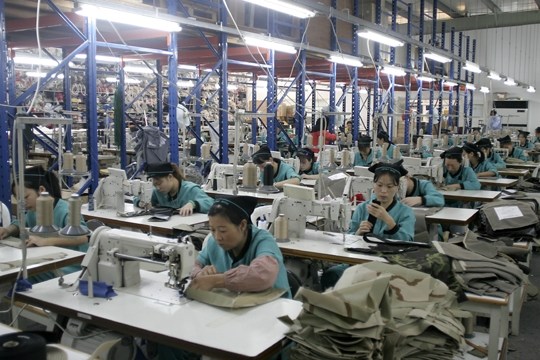Surging labor costs
Almost all economists attributed the "industry shift" to China's rising labor costs.
"Businesses began to move their plants and manufacturers to other places with cheaper production costs, because the Chinese government continues to raise the minimum wage and the yuan continues to appreciate," said Liu Yuanchun, professor at Renmin University.
The Ministry of Human Resources and Social Security reported on Jan 25 that 30 provinces in China had raised the minimum wage by the end of 2010, representing a 22.8 percent average growth nationwide. The government also vowed to increase the minimum wage again at a proper time in 2011.
According to Helen Qiao, chief economist for Goldman Sachs in Hong Kong, real wages for manufacturing workers in China have grown nearly 12 percent per year in the past decade.
Accounting for factors such as higher labor productivity in the US, the labor cost in Shanghai will be only 30 percent lower than in some US states. Salaries account for 20 to 30 percent of overall costs, so prices of products made in China will only be 10-15 percent cheaper than those made in the US, according to Hal Sirkin. The minimum wage in Shanghai was raised to 1,280 yuan per month on April 1.
Compared with other Southeast Asian countries, Chinese labor is more expensive. Workers in Shenzhen, Guangdong Province, can earn up to 1,320 yuan ($190) a month at minimum wage. In Vietnam, they can earn $85 per month and $148 in Indonesia, according to data from the International Labor Organization.
Analysts said one of the major reasons for the salary hike is that the Chinese government is trying to stimulate domestic consumption and make the country less dependent on low-priced exports. Beijing hopes the move will force export-oriented companies to invest in more innovative or higher-value goods.
Moreover, big manufacturers were moving to raise salaries because they are desperate to attract new workers at a time when many coastal factory cities are struggling with labor shortages.
"Even though salaries were raised, some enterprises still could not get workers," an insider said, as people of working age – from 14-65 years old – are decreasing.
Advantages and problems
In addition to labor, other factors including infrastructure, the capacity of the market, government support policies and the industrial chain will also affect the labor shift.
"With its complete industrial chain and huge market, China's manufacturing sector has big advantages," Liu told the newspaper.
His view was backed up by Shen Minggao, Citigroup's China research head: "Countries like Vietnam and Cambodia can not attract the entire industrial chain of a business, because they lack the infrastructure and their countries are small."
With a reduction of low-end labor-intensive manufacturing, China may get more chances to introduce more high value added business. "When Nike moved its manufacturing from Taiwan to the Chinese mainland in the 1980s because of a labor shortage, Taiwan's factories tried to increase design and R&D departments of high-end products," said Lu Zhengwei, chief economist at the Industrial Bank. "China can also take this as an opportunity for industrial transformation."
However, Chinese manufacturers still have a long way to go in order to make such a change. "Most of them are original equipment manufacturers (OME) for overseas customers, but do not hold the core technology," said Cai Hao, a trading insider.
Many Chinese manufacturers are trapped because their profits are shared with OEMs in other Southeast Asian countries with cheaper labor costs. Moreover, compared with developed countries such as the US and Japan, they are at a disadvantage to develop capital or technology-intensive businesses, according to Lu.
To address the problem, Chinese companies should focus on innovation and develop their own brands, analysts said.


















